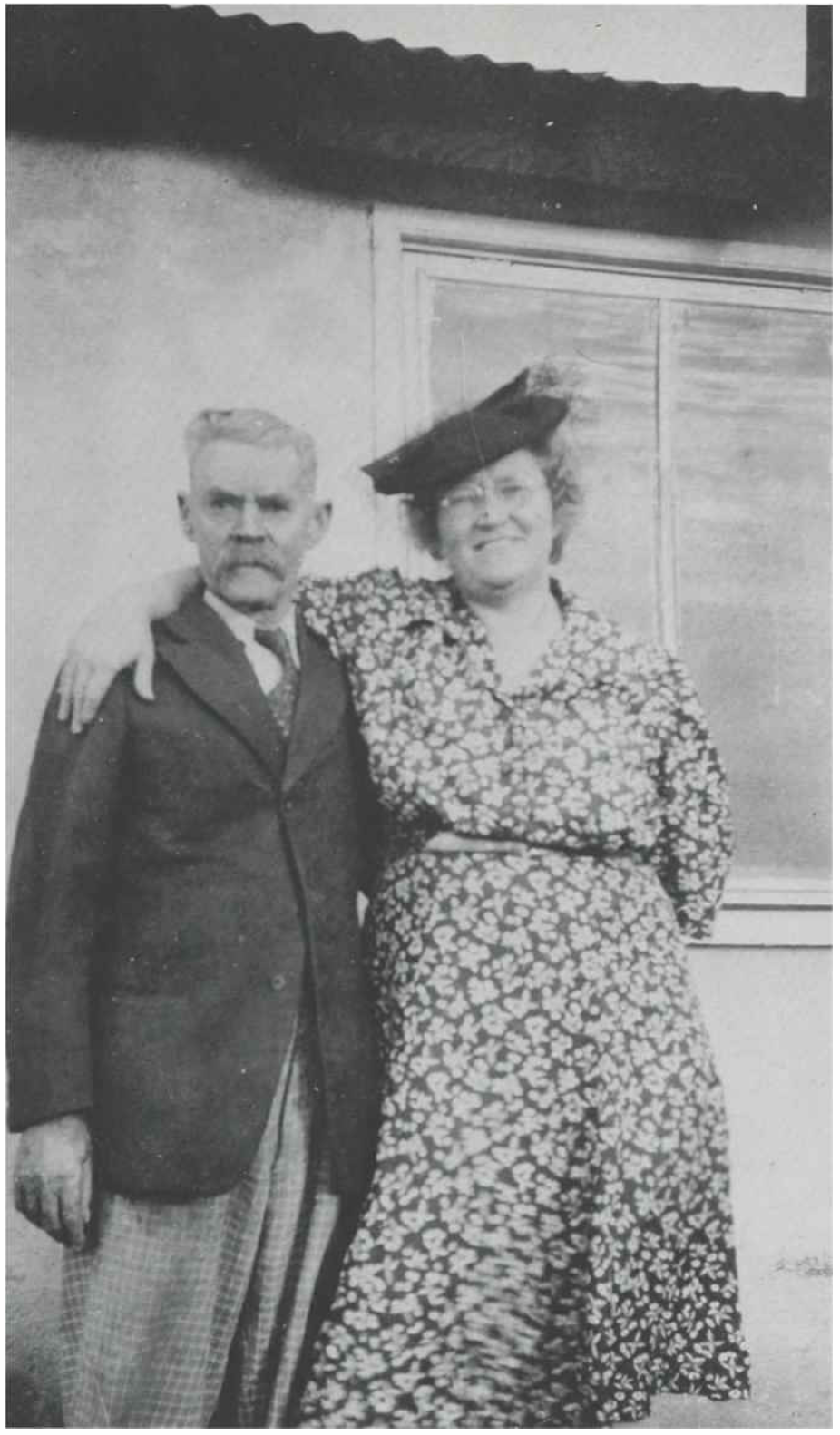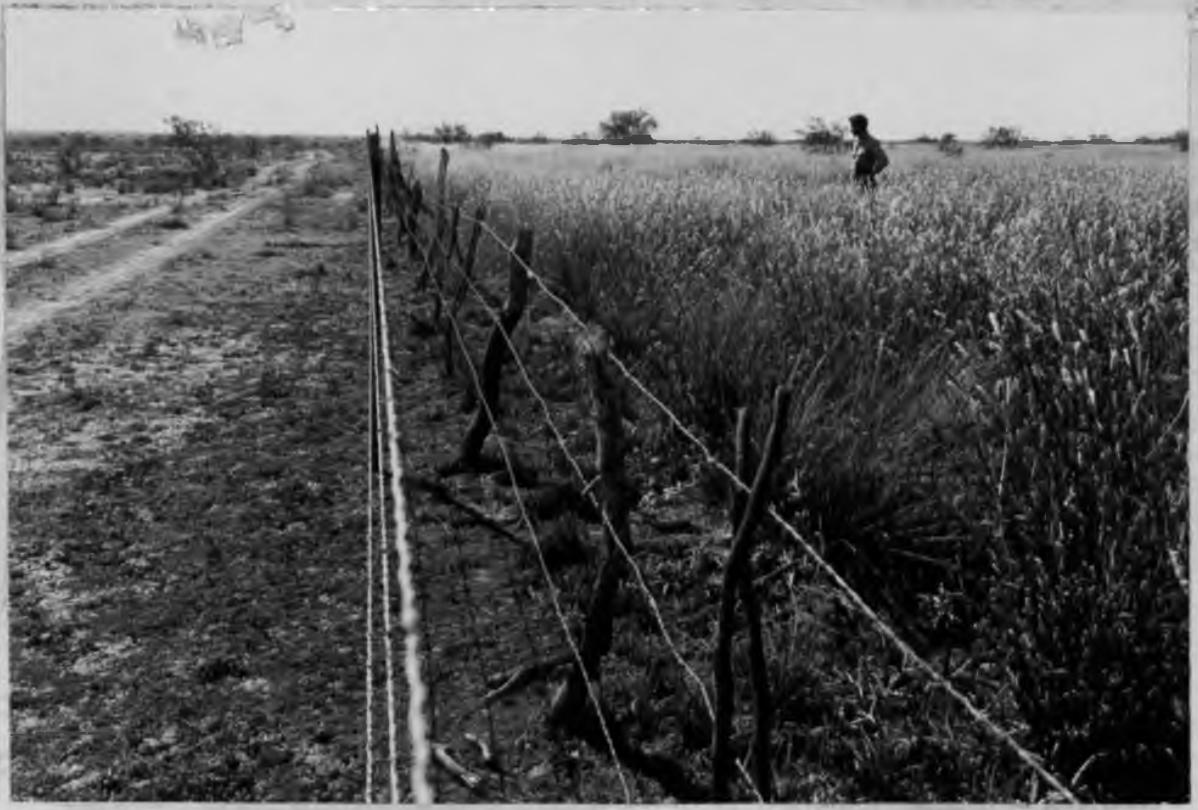We should never forget Joseph Timothy Page, famous for his restoration work at Page Ranch between 1923 and 1941. With the help of a shovel and a spading fork, he managed to restore dryland grasses to his ranch that was surrounded by ecologically devastated rangeland. He did this at an older age, after retiring and purchasing 160 acres of devastated rangeland to do some farming.
Initially, JT Page intended to dig wells and use well water, but despite digging multiple wells up to 30 feet deep, he never found any water he could use. He and his wife had to bring all their own drinking water in from the local town.

JT and Sarah Page at about the time they purchased the now famous Page Ranch.
Mr. Page finally gave up on the idea of irrigating his ranch and decided to do something about the ecologic destruction he saw around him. First he fenced off his land to prevent overgrazing. He reduced his own herd’s size to something the land could handle, and eventually eliminated it, though he did keep some animals on the ranch up to the time he donated it to the University of Arizona.
After fencing off the ranch, Mr. Page proceeded to use a sharpened shovel to remove unwanted scrub and channel rain water down rat holes. His goal was to promote the growth of dryland grasses. The drainage of water down rat holes drove the vermin from his land, and promoted the sprouting of grass seeds that had lodged in the holes. The grasses would grow thickly around and from the holes, then spread to the surrounding areas.
Page Ranch (AKA Page-Trowbridge Ranch) was reported on extensively by the local newspapers and bulletins around Oracle and Tucson, Arizona. It was referred to as an “oasis” and a “miracle” by the press. Quite a few articles about him and histories given by his relatives spanning 60 years–all the way down to the 1980’s– existed locally, but they don’t seem to have been archived anywhere I can find.
In the early 1900’s aerial photos showed the Page Ranch was much greener than surrounding ranch lands. Overgrazing and little-to-no attempts at preventing runoff and erosion had destroyed the lands around his ranch. By comparison, Page ranch looked like a paradise.
Anyone that has lived in dry climates like that at Page Ranch (about 16-inches of rain per year) is used to seeing dirt and scrub, and that is exactly what Mr. Page started with. However, with lots of hard work, Page Ranch was covered in grasses and trees, all without the use of irrigation water. Quite a success story for the time.

The ranch that JT Page fixed is on the right.
According to Mr. Page’s niece, Lucy Levering, he used to go out into every rainstorm with a sharpened shovel or other tool no matter what time of day or night. If there was rain, he was out in it working. His effort was to make sure every ounce of rain ended up in the ground instead of running off the land.
It’s pretty obvious to any student of permaculture why he’d go out in the rain to do his work. The rain would allow Mr. Page to see the contours of the land, because water always flows perpendicular to the keylines of the land. Very low tech and brilliant. He obviously spent a lot of energy learning how his land worked.
JT Page used to funnel all water into rat holes or ant holes by digging little v-shaped trenches to the holes. This served two purposes. It hydrated the land, and it made the pests move away from the ranch. I can see this being very useful up at my ranch. No irrigation water or poison needed–this is an ingenious method that I intend to use in a slightly modified fashion.
Another practice at Page Ranch was a religious use of gray waters. Dish water and any other waste water went straight on their garden. No waste water was thrown out. It was always reused on the land. (Remember, this is 1923-1941, not the 2000’s!)
Mr Page also used small check dams and berms to slow the flow of runoff, allowing the water to peculate into the soil. Give that guy a swale and modern permaculture practices and who knows what he could have pulled off.
Determination was a key to Page’s success. At the time, his practices probably seemed insane, but results made others respect his efforts. JT Page kept this all up because of a firm Christian belief in the Bible which he felt said what he was doing was possible. He felt the impossible was possible, if he kept at it and had faith.
The results can’t be argued with. He made it to national fame by 1941 with multiple articles being published about his huge success story in both Outdoor America Magazine and American Forests Magazine among others.
** WARNING. STOP READING IF YOU WANT WARM FUZZIES. **
After he was to the point he felt he couldn’t take care of the ranch anymore, he donated it to the University of Arizona for dryland grass research purposes. They did this for a few years with several detailed scientific studies being published.
Then, in 1962, the university began dumping radioactive and toxic chemical waste on Page Ranch. This continued for decades. Today the miracle ranch that Mr. Page put together using techniques that were decades beyond his time is simply referred to as the Page-Trowbridge Radioactive/Toxic Waste Landfill.
I told you to stop reading if you wanted to keep your warm fuzzies.
.
.
Note: Archiving this post on Hive before my original blog vanishes.
Source
Plagiarism is the copying & pasting of others work without giving credit to the original author or artist. Plagiarized posts are considered fraud and violate the intellectual property rights of the original creator.
Fraud is discouraged by the community and may result in the account being Blacklisted.
If you believe this comment is in error, please contact us in #appeals in Discord.
"Slander is a civil wrong (tort) and can be the basis for a lawsuit. "
https://legal-dictionary.thefreedictionary.com/slander
I make it clear in the note that I own this material